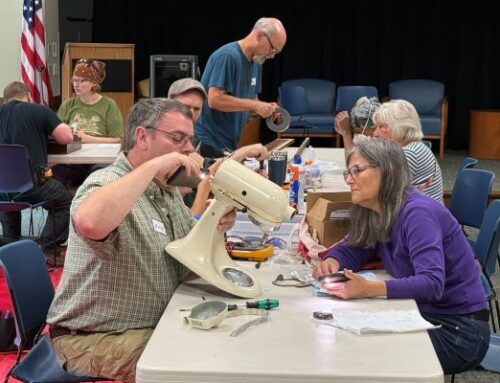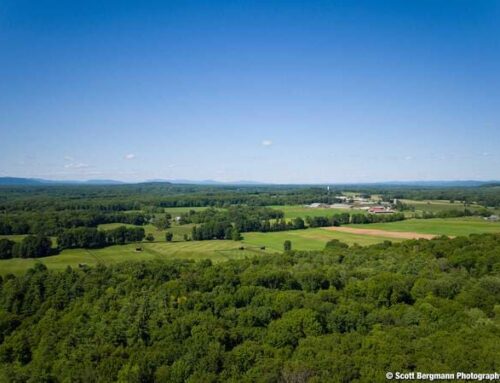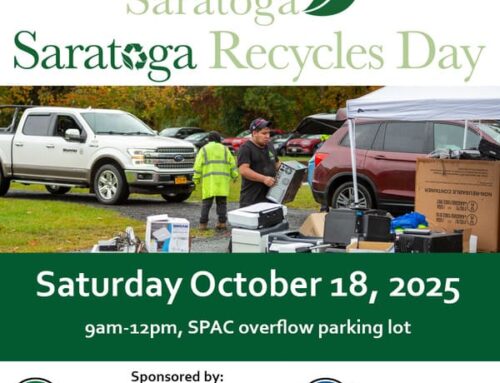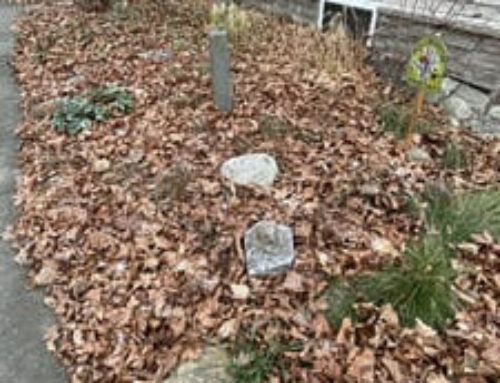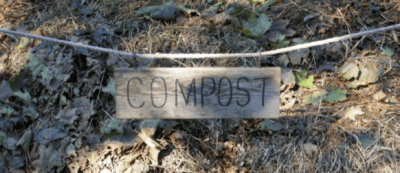
By Jennifer Armstrong, Compost Committee Co-Chair
Maximizing Surface area for Faster Compost
Garden chores are still many weeks away, but now is a good time to make plans for spring cleanup. When the snow is all gone and the sun is growing stronger every day, it’s very tempting to grab a rake, but wait until the daytime temperatures are consistently in the 50s, otherwise you risk destroying many beneficial insects still lying dormant in the leaf litter. Once it’s safe to do so, you’ll have plenty of dead plant debris to deal with, from sticks and leaves to old plant stems and seed pods. Don’t just bag it and put it out at the curb, break it down for a quick start to your compost. What might seem like a large quantity of dead leaves and stalks will condense to a much smaller volume than you expect.
The process of organic decomposition relies on many tiny organisms, as well as oxygen and water. Large pieces of plant material can take a very long time for these microbes to break down, but if you can increase the surface area relative to the volume, you’ll be giving them a huge head start. I use three different machines to maximize surface area in my compost.
1. Crosscut paper shredder
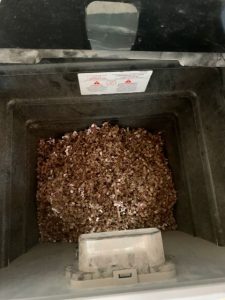 The first is a crosscut paper shredder that can handle fifteen sheets of paper – in other words, pieces of brown cardboard. With so many brown boxes being delivered to our homes every week, we all have a lot of cardboard, which can be a useful additive to the compost pile. Many people new to composting struggle with compost that quickly goes wet and slimy, and this typically is a result of not having enough “brown” material. Run a box or two through a strong shredder and you’ll have lots of fluffy dry brown material to combat that sliminess. Toss in several handfuls of shredded cardboard each time you add “green” material and you’ll have a much healthier compost pile. Be sure to remove labels and tape, and avoid using cardboard with colored inks – stick to plain brown cardboard.
The first is a crosscut paper shredder that can handle fifteen sheets of paper – in other words, pieces of brown cardboard. With so many brown boxes being delivered to our homes every week, we all have a lot of cardboard, which can be a useful additive to the compost pile. Many people new to composting struggle with compost that quickly goes wet and slimy, and this typically is a result of not having enough “brown” material. Run a box or two through a strong shredder and you’ll have lots of fluffy dry brown material to combat that sliminess. Toss in several handfuls of shredded cardboard each time you add “green” material and you’ll have a much healthier compost pile. Be sure to remove labels and tape, and avoid using cardboard with colored inks – stick to plain brown cardboard.
2. Garden Shredder and 3. String Trimmer
The second and third tools are variations on the same idea – garden shredders. I have a standing leaf shredder that basically is a string trimmer on a stand, and I can feed tons of dry material through it to get a fine confetti of dead leaves. I also use my weed whacker and a big tub to blitz up green and brown plant material together – think of using an immersion blender in a pot of vegetable soup and you’ve got the idea. Don’t try to do this with wet, soggy material, or you’ll just clog up the trimmer.
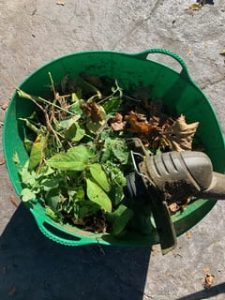
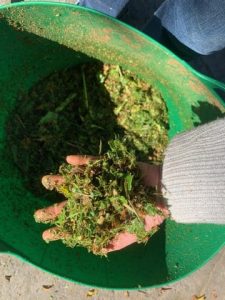
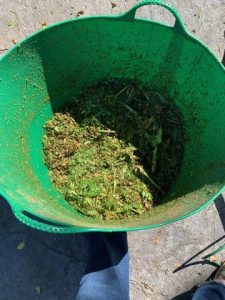
Once this material is reduced to this fine texture, the microbes can get to work very quickly. You’ll reduce your volume of spring clean up material, and have a great start to your compost. If you’re a gardener, you know you can make use of this great stuff – and if you’re not a gardener, maybe ask a friend who does have a garden if they’d like your yard confetti for returning nutrients to the soil. This is the gardener’s version of reduce, reuse, and recycle!
Keep an eye on our social media and newsletters for announcements about composting workshops
Find more information and resources on our Compost Resources page

